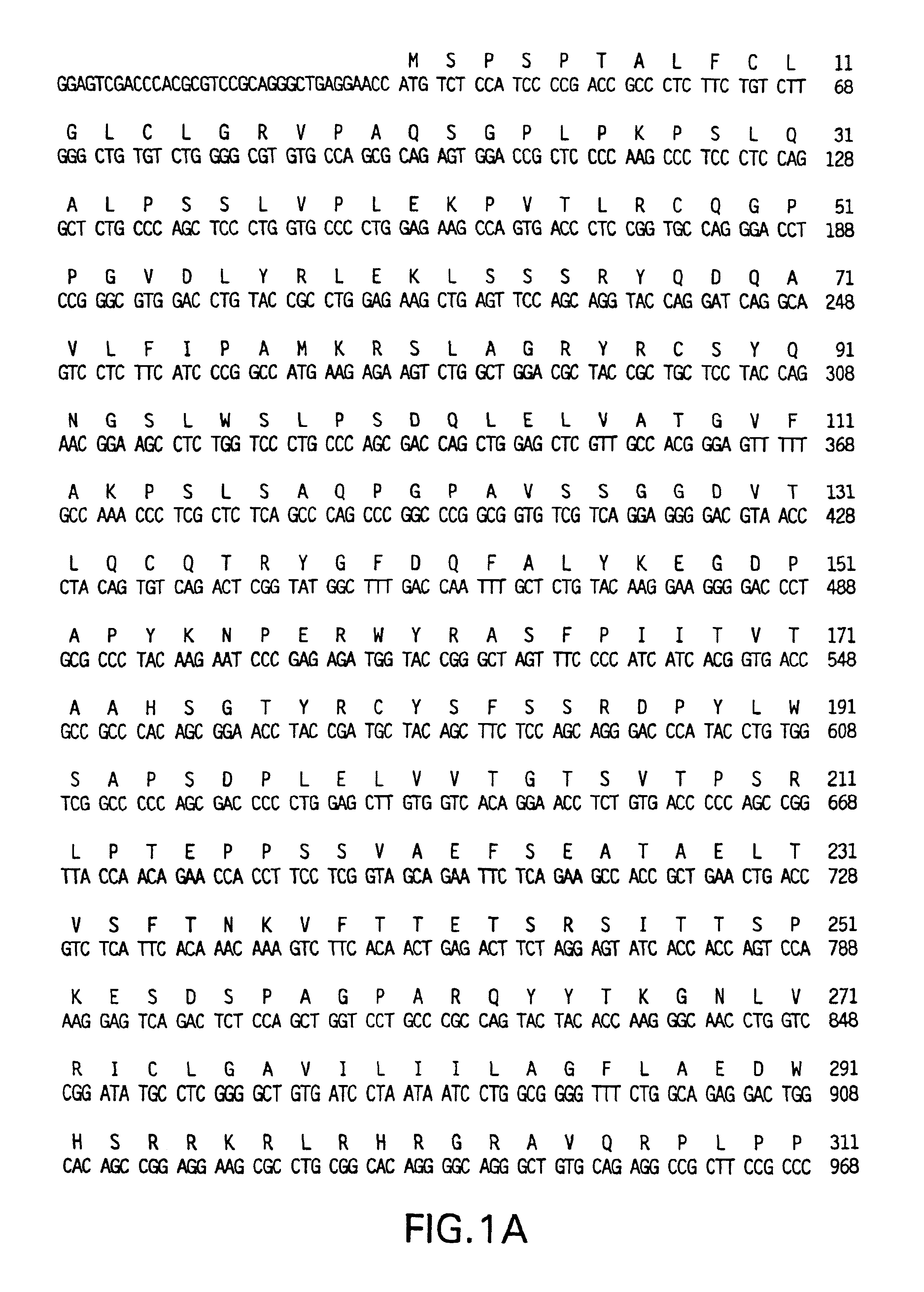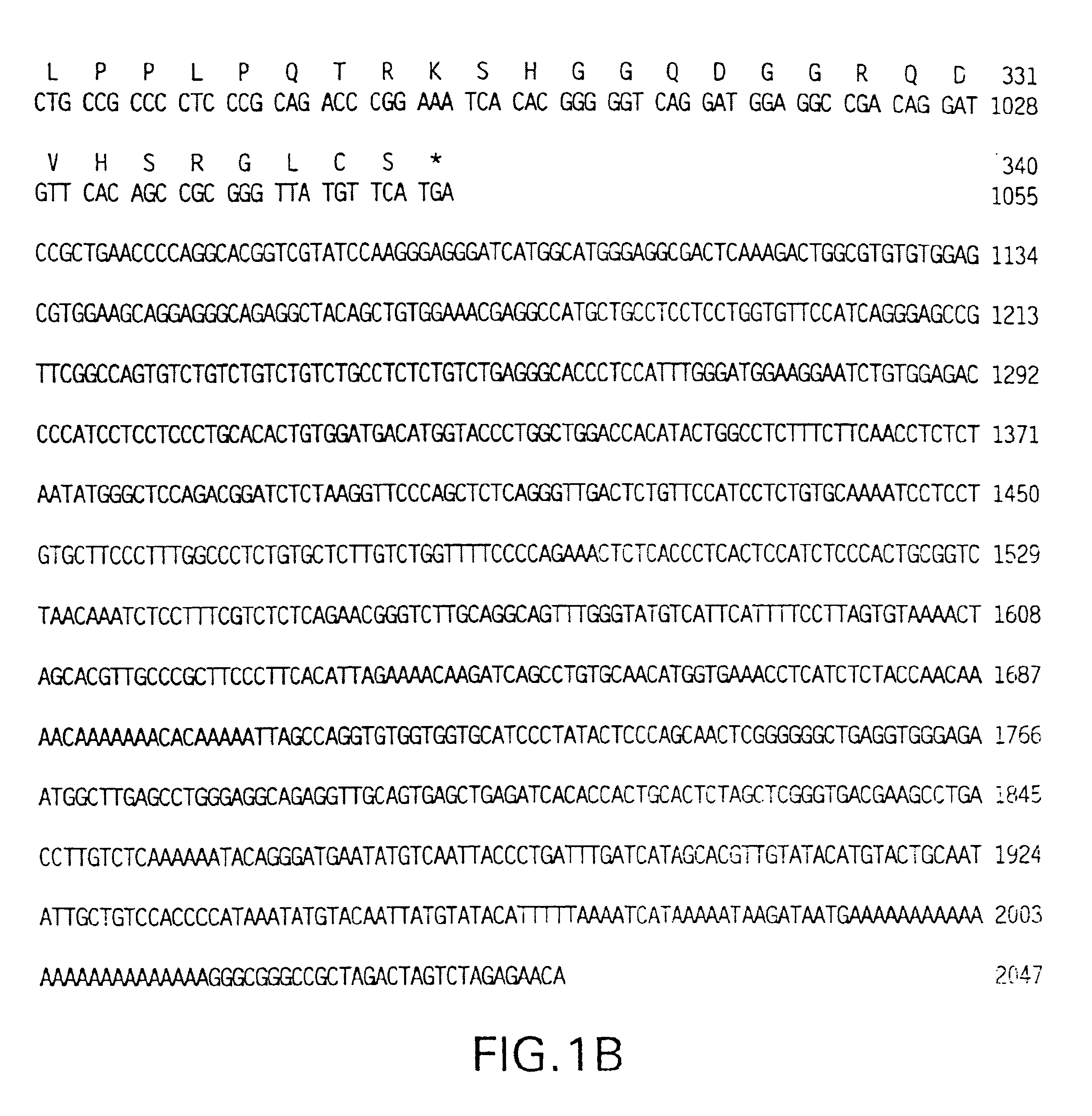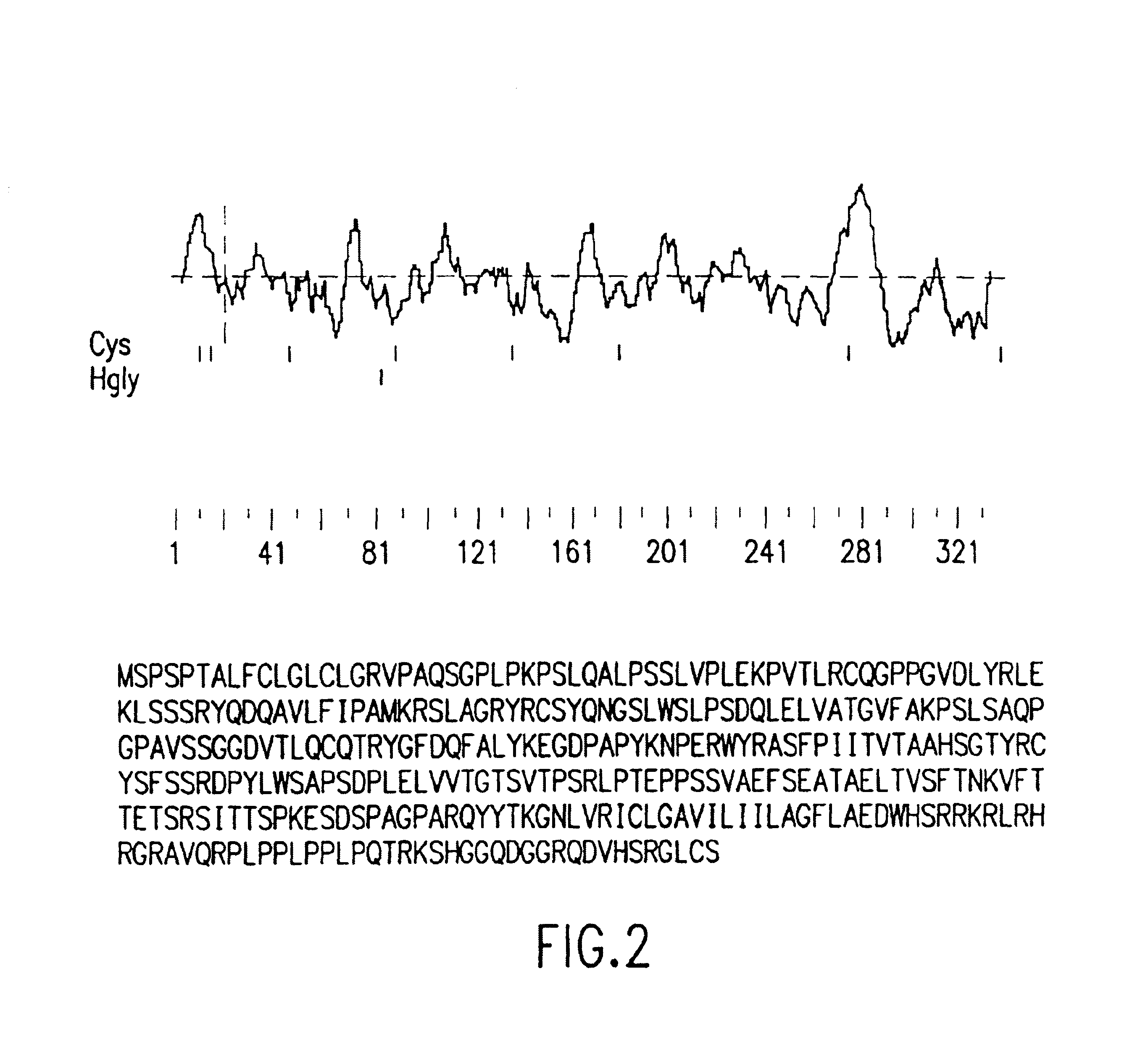Glycoprotein VI antibodies and uses thereof
a technology of glycoprotein and antibodies, applied in the field of glycoprotein vi antibodies, can solve the problems of inability to clone gpvi, limited experiments that can be performed, and inability to modulate cell-cell interactions, and achieve the effects of modulating, stabilizing, promoting, inhibiting or disrupting protein-protein interactions, and/or modulating cell-cell interactions
- Summary
- Abstract
- Description
- Claims
- Application Information
AI Technical Summary
Benefits of technology
Problems solved by technology
Method used
Image
Examples
Embodiment Construction
[0103]The TANGO 268 proteins and nucleic acid molecules comprise a family of molecules having certain conserved structural and functional features. As used herein, the term “family” is intended to mean to two or more proteins or nucleic acid molecules having a common structural domain and having sufficient amino acid or nucleotide sequence identity as defined herein. Family members can be from either the same or different species. For example, a family can comprises two or more proteins of human origin, or can comprise one or more proteins of human origin and one or more of non-human origin. Members of the same family may also have common structural domains.
[0104]For example, TANGO 268 proteins of the invention have signal sequences. As used herein, a “signal sequence” includes a peptide of at least about 15 or 20 amino acid residues in length which occurs at the N-terminus of secretory and membrane-bound proteins and which contains at least about 70% hydrophobic amino acid residues...
PUM
| Property | Measurement | Unit |
|---|---|---|
| apparent molecular mass | aaaaa | aaaaa |
| apparent molecular mass | aaaaa | aaaaa |
| apparent molecular mass | aaaaa | aaaaa |
Abstract
Description
Claims
Application Information
 Login to View More
Login to View More - R&D
- Intellectual Property
- Life Sciences
- Materials
- Tech Scout
- Unparalleled Data Quality
- Higher Quality Content
- 60% Fewer Hallucinations
Browse by: Latest US Patents, China's latest patents, Technical Efficacy Thesaurus, Application Domain, Technology Topic, Popular Technical Reports.
© 2025 PatSnap. All rights reserved.Legal|Privacy policy|Modern Slavery Act Transparency Statement|Sitemap|About US| Contact US: help@patsnap.com



